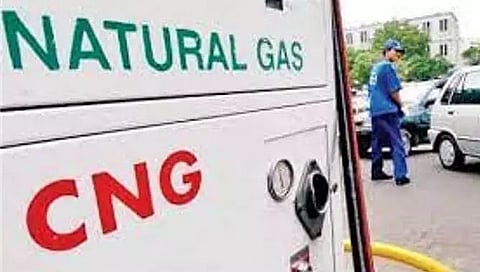
- Home
- Live Blog
- Breaking News
- Top Headlines
- Cities
- NE News
- Sentinel Media
- Sports
- Education
- Jobs

Estimated cost of 100 buses is Rs 91.12 crore
National tender floated for procurement of buses
STAFF REPORTER
GUWAHATI: Come the second half of 2022, a fleet of 100 CNG (Compressed Natural Gas)-fueled AC buses will start running in Guwahati under the Guwahati Smart City Ltd. It is the first such initiative in the state.
The estimated cost of the 100 CNG-fuelled buses is Rs 91.12 crore. If proven cost and environment effective, such buses will run in other cities of the state in phases.
CNG-fueled buses are in demand for less pollution. Such buses are also more cost-effective than diesel-fueled ones.
The State Government has prepared a plan to this effect. It has also floated national tenders to procure CNG-fueled AC buses.
According to ASTC (Assam State Transport Corporation) sources, the setting up of CNG-filling stations is a must in Guwahati. The first such stations may come up in ASTC premises. After procurement, Guwahati Smart City Ltd will hand over the CNG-fueled AC buses to the ASTC for operation.
CNG, also known as compressed natural gas, is an eco-friendly alternative to gasoline. Made by compressing natural gas (methane) down to less than 1% of its volume, CNG fuel is safer than gasoline and diesel because it is non-toxic and does not contaminate groundwater. This natural gas is the same gas that you use daily to heat your home and water, cook on the stove and oven to dry your clothes in a dryer. The use of CNG fuel is becoming more popular with both commercial and non-commercial vehicles.
Both Liquefied Natural Gas (LNG) and Compressed Natural Gas (CNG) are natural gas but their differences relate to how they are stored and used. LNG, to maintain its liquefied state, must be stored at minus 160 degrees Celsius in cryogenic storage. Given the storage temperature of LNG, there is a frostbite risk, and operators are required to wear protective gear (including gloves and face shields) and training is needed to ensure safe operation.
The production facility for CNG is simpler than other remote gas utilization options such as liquefied natural gas (LNG), gas to liquid (GTL), ammonia, or methanol. It typically consists of compression, cooling, dehydration, and possibly liquefied petroleum gas (LPG) separation. The extent of compression and cooling is different for the various CNG processes. The scope of the production facility depends on the quality of the gas and reservoir pressure, but is a small fraction of that of a comparably sized LNG or GTL facility.
Also watch: